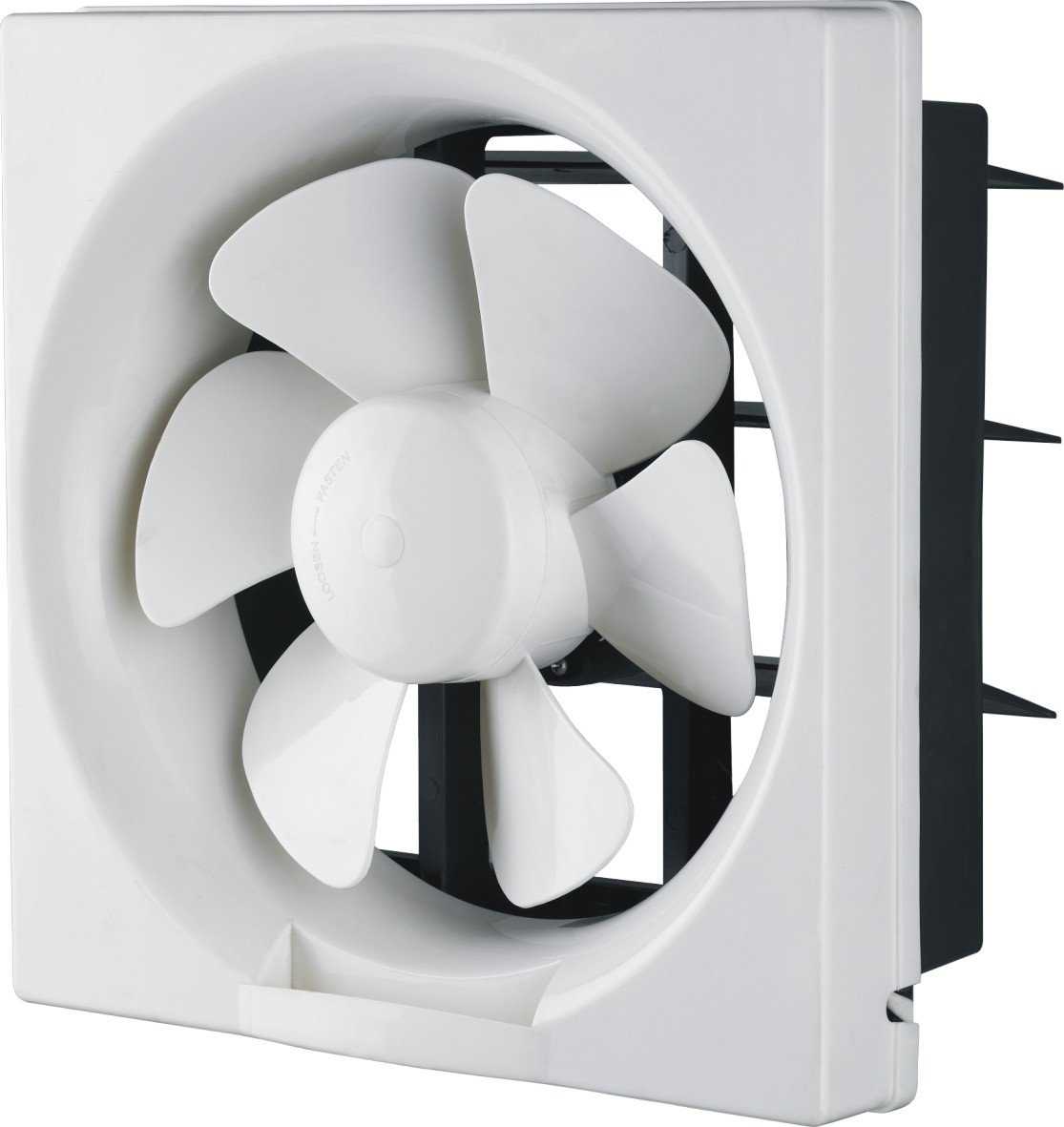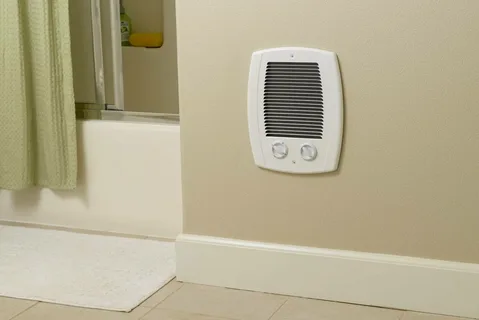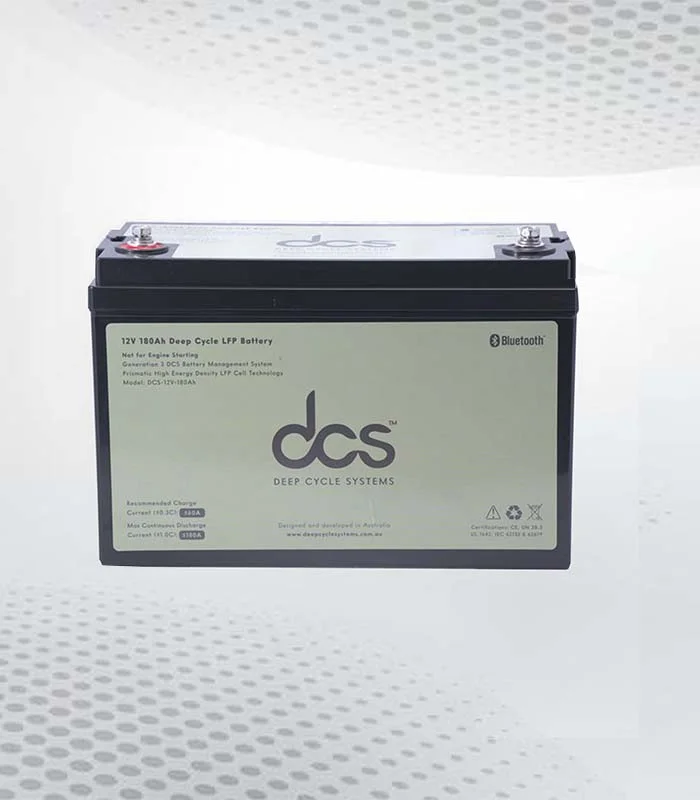Proper ventilation is crucial for maintaining a healthy indoor environment, yet it often goes overlooked in many homes and workplaces. Poor air circulation can lead to a buildup of pollutants, allergens, and moisture, contributing to health issues and structural damage over time. Ventilation fans play a pivotal role in ensuring indoor air quality remains high by actively removing stale air and introducing fresh air outside. Whether in kitchens, bathrooms, or attics, these fans help regulate humidity levels, prevent mould growth, and eliminate odours, creating a more comfortable atmosphere.
The Impact of Ventilation on Indoor Air Quality
Indoor air quality (IAQ) directly influences our health, with poor IAQ contributing to respiratory issues, allergies, and chronic conditions. Effective ventilation mitigates these risks by expelling indoor pollutants like volatile organic compounds (VOCs), dust, mould, and allergens while introducing fresh outdoor air. This exchange process reduces contaminant concentration, maintaining a healthier indoor environment.
Additionally, proper ventilation helps regulate indoor temperature and humidity, preventing conditions that facilitate mould growth and dust mite proliferation. Ventilation plays a vital role in creating a more pleasant and healthy living space by ensuring a consistent influx of clean air and removing stale air. Moreover, modern ventilation systems can be equipped with advanced filtration technologies that capture even the smallest particulates, further enhancing air quality.
Integrating smart controls can also optimize ventilation efficiency, adapting to changing environmental conditions and occupancy levels. These intelligent systems ensure energy is used efficiently, providing optimal air quality without unnecessary waste. As technology advances, integrating IoT devices with ventilation systems offers even more precise monitoring and control, allowing homeowners to seamlessly tailor their indoor environment to their specific needs.
Health Benefits Associated With Adequate Ventilation
Respiratory Health
Adequate ventilation is critical in safeguarding respiratory health. By removing harmful pollutants and allergens, good ventilation helps to mitigate conditions such as asthma, bronchitis, and other respiratory issues. The consistent exchange of indoor and outdoor air dilutes contaminants, reducing the risk of respiratory infections and promoting easier breathing.
Cognitive Function and Productivity
Studies have shown that high indoor air quality can significantly improve cognitive function and productivity. Proper ventilation enhances concentration, decision-making abilities, and overall mental performance in workplaces and educational settings. Cleaner air reduces the likelihood of headaches, fatigue, and irritability, leading to a more productive and focused environment.
Allergen Control
Maintaining good ventilation is crucial for individuals prone to allergies. Ventilation systems can significantly reduce allergy symptoms by continuously filtering out pollen, pet dander, and dust mites. This is especially important in residential settings, where long-term exposure can lead to chronic conditions.
Mental Well-being
Proper ventilation has a profound impact on mental well-being. Fresh air circulation helps regulate serotonin levels, improving mood and reducing stress. In poorly ventilated spaces, increased levels of carbon dioxide and other pollutants can contribute to feelings of anxiety and depression. Ensuring adequate ventilation creates a more balanced and uplifting atmosphere.
Reducing Exposure to Toxic Substances
Indoor environments can harbor various toxic substances, from household cleaning chemicals to emissions from building materials. Adequate ventilation helps to expel these toxins, reducing their concentration and mitigating potential health risks. It is especially vital in environments where children, elderly individuals, and those with compromised immune systems reside.
Energy Efficiency and Cost Savings through Ventilation
Implementing energy-efficient ventilation systems can significantly reduce energy consumption and costs. Advanced solutions like heat recovery ventilators (HRVs) and energy recovery ventilators (ERVs) are designed to optimize energy use by reclaiming heat or cooling from exhaust air and transferring it to incoming fresh air. This process minimizes the demand for heating and cooling systems, resulting in lower utility bills.
Modern ventilation technologies also offer features like programmable timers and sensors that adjust airflow based on occupancy and air quality levels. These systems enhance energy savings by maintaining optimal ventilation only when necessary. Additionally, integrating smart controls allows for remote monitoring and adjustments, ensuring the ventilation system operates at peak efficiency.
Energy-efficient ventilation systems reduce energy consumption and contribute to a smaller carbon footprint, aligning with sustainable living practices. This dual benefit of cost savings and environmental responsibility makes energy-efficient ventilation a wise investment for residential and commercial settings. Moreover, installing these systems can increase property value by appealing to eco-conscious buyers and tenants.
Ventilation Requirements in Various Indoor Settings
Ventilation needs vary widely based on the type of indoor setting. Each environment has unique requirements to ensure optimal air quality and comfort. In residential spaces, particular attention should be given to kitchens and bathrooms where moisture and odours are prevalent. Exhaust fans and strategically placed windows can help manage these areas effectively. Whole-house ventilation systems are also beneficial for maintaining a consistent influx of fresh air throughout the home.
Commercial buildings, such as offices and retail spaces, require more robust ventilation systems to handle larger numbers of occupants and diverse activities. Ensuring these systems comply with local building codes and standards is crucial. Proper ventilation in these settings can improve employee comfort, productivity, and overall workplace health.
Healthcare facilities, including hospitals and clinics, have even more stringent ventilation requirements to prevent the spread of airborne diseases. Specialized systems with advanced filtration capabilities are necessary to maintain sterile environments and protect patients and healthcare workers. Schools and educational institutions also demand specific ventilation solutions to ensure a healthy learning environment.
Proper air circulation can reduce the spread of illnesses and improve cognitive function among students and staff. Finally, industrial settings like factories and warehouses often require heavy-duty ventilation systems to manage pollutants, chemicals, and heat generated by machinery. These systems are essential for safeguarding worker health and complying with occupational safety regulations.
The Role of Ventilation Fan in Controlling Humidity Levels
Ventilation fans control indoor humidity levels, particularly in moisture-prone kitchens and bathrooms. These fans work by exhausting moist air out of the room, reducing the likelihood of mould growth, mildew, and other humidity-related issues. By expelling excess moisture, these fans help maintain an optimal indoor humidity level, typically between 30% and 50%, which is ideal for both comfort and health.
In kitchens, these fans are often integrated into range hoods, crucial for removing steam generated during cooking. This not only prevents condensation on surfaces but also helps in managing cooking odors and smoke. In bathrooms, exhaust fans play a vital role in expelling steam from showers and baths, preventing damp conditions that can lead to mold and mildew.
Advanced fans come equipped with humidity sensors that activate the fan when moisture levels exceed a set threshold. This ensures continuous humidity control without requiring manual operation, making it easier to maintain a comfortable and healthy indoor environment. Additionally, whole-house ventilation systems often include dedicated humidity control features. These systems work with localized fans to ensure that humidity is effectively managed throughout the living space, contributing to a balanced and comfortable indoor atmosphere.
Innovations and Trends in Ventilation Technology
The field of ventilation technology is continually evolving, with innovations making systems more efficient and user-friendly. Some of the latest trends include smart ventilation systems, which allow users to monitor and control indoor air quality from their smartphones or other devices. These systems can automatically adjust airflow based on real-time air quality measurements, enhancing comfort and energy efficiency.
Advanced filtration technologies have also seen significant improvements. High-efficiency particulate air (HEPA) filters, for instance, can now capture a substantial percentage of airborne particles, greatly improving indoor air quality when integrated into ventilation systems. Additionally, the advent of energy recovery ventilators (ERVs) and heat recovery ventilators (HRVs) has revolutionized energy efficiency in ventilation. These systems reclaim heat or cooling from exhaust air and transfer it to incoming fresh air, reducing the load on heating and cooling systems.
Emerging technologies such as ultraviolet (UV) light sterilization within ventilation systems are also gaining traction. These systems use UV light to kill airborne pathogens, offering extra protection against viruses and bacteria. Finally, integrating sensors and smart controls enables automatic adjustments based on occupancy and air quality, optimizing ventilation performance and ensuring a healthier indoor environment.
Maintenance Tips for Optimal Ventilation System Performance
Regular Cleaning: Regular cleaning is one of the most important aspects of maintaining optimal ventilation system performance. Dust, debris, and other particulates can accumulate in vents, ducts, and filters, reducing efficiency and air quality. Clean or replace filters as the manufacturer recommends and ensure that vents and ducts are free from obstructions.
Inspecting Components: Periodically inspect all components of your ventilation system, including fans, motors, and ductwork. Look for signs of wear and tear, rust, or damage that may impede performance. Address any issues promptly to avoid more significant problems down the line.
Checking Seals and Connections: Ensure all seals and connections within the ventilation system are airtight. Leaky ducts and poorly sealed connections can lead to loss of efficiency and higher energy costs. Sealing gaps with appropriate materials can help maintain system performance.
Monitoring Airflow: Consistently monitor the airflow from your ventilation system. If you notice a decrease in airflow, it could indicate a blockage or malfunction. Addressing airflow issues quickly can prevent further damage and maintain indoor air quality.
Professional Maintenance: Schedule regular professional maintenance to ensure your ventilation system functions optimally. Technicians can perform in-depth inspections, cleanings, and repairs that may be beyond the scope of routine homeowner maintenance.
Improving Comfort with Proper Ventilation
Proper ventilation significantly enhances indoor comfort by maintaining optimal temperature and humidity levels. A well-ventilated space prevents heat and moisture buildup, creating a more stable and pleasant environment. By ensuring consistent air exchange, ventilation systems help to evenly distribute conditioned air from HVAC systems, avoiding hot or cold spots within a room.
Additionally, proper ventilation mitigates odours from cooking, cleaning products, or other sources, contributing to a fresher indoor atmosphere. Advanced systems with smart controls can adjust airflow based on occupancy and air quality, ensuring a continuous supply of fresh air tailored to the space’s needs. This adaptability enhances comfort and supports overall well-being by reducing stuffiness and the sensation of stale air.
Adequate ventilation ensures that the air remains breathable and comfortable in open-plan spaces or densely occupied rooms, even during gatherings or peak usage times. By prioritizing proper ventilation, you can create a more inviting and enjoyable indoor environment that promotes relaxation and productivity.
Conclusion
A well-ventilated indoor environment is vital for maintaining both health and comfort. From removing harmful pollutants to regulating temperature and humidity, proper ventilation addresses multiple aspects of indoor air quality. It is crucial in mitigating respiratory issues, improving cognitive function, and controlling allergens. Advanced systems like energy recovery ventilators (ERVs) and smart ventilation technologies offer enhanced efficiency and convenience, making it easier to maintain optimal indoor conditions. Innovations in ventilation fan technology, including smart controls and advanced filtration, continue improving indoor air quality.
FAQS
Q: What Are The Signs Of Poor Ventilation?
A: Common indicators include excessive humidity, musty odours, visible mould growth, and increased allergy symptoms. Stale air and persistent condensation on windows can also signal poor ventilation.
Q: How Often Should I Ventilate My Home?
A: It’s generally recommended to ventilate your home at least once an hour, particularly in areas prone to high humidity, such as kitchens and bathrooms. Regular ventilation helps maintain optimal indoor air quality and reduces moisture buildup.
What Is The Purpose Of A Ventilation Fan?
Ventilation fans circulate air, remove indoor pollutants, control humidity, and provide fresh air in enclosed spaces. They help maintain indoor air quality by expelling stale air and bringing in fresh air from outside.
| Related Business Listings |
| Contact Directory |
| Local Business Profiles |




